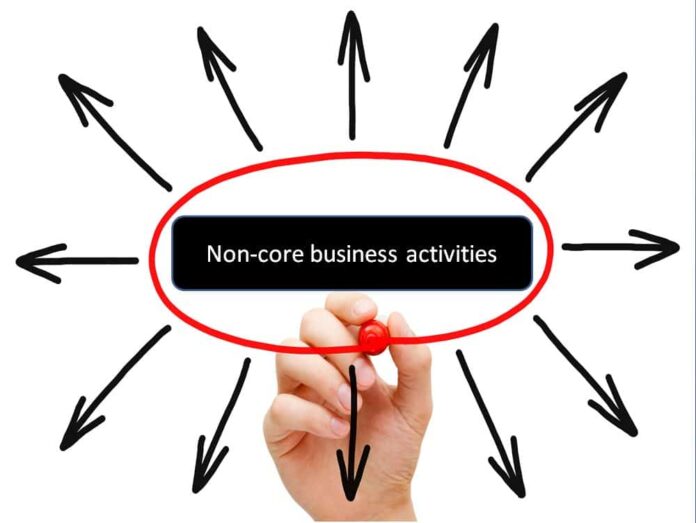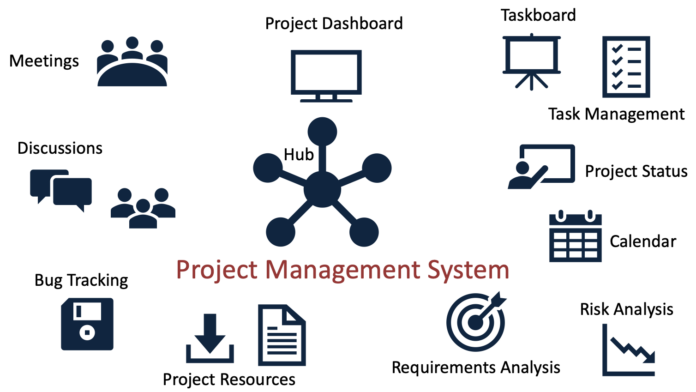In today’s fast-paced business world, efficiency and profitability determine success. However, businesses must streamline processes, reduce waste, and optimize resources to achieve maximum efficiency and profitability.
This article will explain streamlining and explore ten ways to streamline your business for maximum efficiency and profitability.
What is Streamlining?

Streamlining is optimizing and simplifying business operations to increase efficiency and productivity. It involves identifying and removing unnecessary steps, reducing waste, and improving workflows to achieve better results with fewer resources. Following are some of the benefits of streamlining:
-
- Reduces costs – By streamlining processes, businesses can identify and eliminate inefficiencies, which reduces waste and costs.
- Increases productivity – Streamlining eliminates redundant tasks and simplifies workflows, allowing employees to focus on value-added activities that improve productivity.
- Improving quality – Streamlining processes can improve quality control and reduce errors by identifying and addressing inefficiencies.
- Enhances customer satisfaction – Streamlining processes can result in faster delivery times, better communication, and improved customer service, all of which enhance customer satisfaction.
- Boosts profitability – By reducing costs, increasing productivity, and improving quality and customer satisfaction, streamlining can significantly boost profitability.
- Enables scalability – Streamlining makes it easier to scale operations without increasing costs, as processes are optimized to be more efficient and effective.
Gain Expertise in Business Management

Gaining expertise in business management is essential for streamlining and advancing careers in today’s competitive job market. By developing a deep understanding of key business concepts, such as finance, marketing, management, and leadership, individuals can gain the skills and knowledge necessary to succeed in various roles and industries.
For instance, online MBA courses can provide comprehensive training in all aspects of business management. The online format allows students to complete their coursework flexibly while receiving the same high-quality education as on-campus students.
Through coursework, experiential learning opportunities, and interactions with experienced faculty and industry professionals, students can develop the expertise they need to excel as business leaders and achieve their career goals.
Identify Inefficiencies and Bottleneck

Analyzing workflows, observing employee tasks, and tracking performance metrics can help identify inefficiencies and bottlenecks and determine where improvements are possible.
Inefficiencies can arise from poor communication, unnecessary steps, or outdated technology.
Bottlenecks can occur when certain process stages take longer than others, causing delays and hindering productivity. Process improvements, automation, or better training and communication can address inefficiencies and bottlenecks.
Streamlining these processes can save time and resources, improve quality, and boost efficiency and productivity. Regularly monitoring and analyzing your business processes can help ensure your operations run smoothly and effectively.
Automate Repetitive Tasks

Automating repetitive tasks can save time and resources while improving productivity and accuracy. By leveraging technology to handle routine tasks, businesses can free employees to focus on higher-value activities.
This action can increase job satisfaction, better quality work, and reduce employee burnout. Some benefits of automating repetitive tasks include the following:
- Faster and more accurate processing
- Reduced errors and inconsistencies
- Improved compliance and regulatory adherence
- Enhanced data security and confidentiality
- Increased scalability and capacity for growth
- Lower operational costs and improved profitability.
Businesses can streamline their operations and achieve greater efficiency and competitiveness by identifying tasks where automation is possible.
Outsource Non-Core Activities

Outsourcing non-core activities can help businesses focus on their core competencies and improve their efficiency and profitability. By delegating non-essential tasks to third-party vendors or contractors, companies can reduce costs, free up resources, and improve quality. Some benefits of outsourcing non-core activities include:
- Access to specialized expertise and technology
- Greater flexibility and scalability
- Reduced overhead costs and administrative burdens
- Improved risk management and compliance
- Increased focus on core business activities
- Enhanced competitive advantage and market positioning.
By carefully selecting and managing outsourcing partners, businesses can leverage their strengths and minimize weaknesses, ultimately achieving greater success and growth.
Implement a Project Management System

A project management system can help businesses plan, organize, and execute projects more effectively. Project management systems can improve collaboration, increase efficiency, and reduce errors by providing a centralized task tracking, resource allocation, and communication platform.
Some benefits of implementing a project management system include the following:
- Better project planning and scheduling
- Improved resource allocation and task prioritization
- Enhanced team collaboration and communication
- Greater visibility into project progress and performance
- Increased accountability and responsibility
- Reduced project costs and improved profitability.
Businesses can streamline their project management processes and achieve tremendous success in their initiatives by selecting a system that meets their needs and integrating it into their workflows
Embrace Digital Transformation

Embracing digital transformation can help businesses leverage technology to drive innovation, streamline processes, and enhance customer experiences. By adopting digital tools and strategies, businesses can improve their agility, responsiveness, and competitiveness. Some benefits of embracing digital transformation include the following:
- Increased efficiency and productivity
- Improved data analysis and insights
- Enhanced customer engagement and satisfaction
- Greater agility and adaptability
- Reduced costs and increased profitability
- Improved risk management and compliance.
By identifying areas where digital solutions can add value and investing in the necessary resources and infrastructure, businesses can position themselves for long-term success and growth in the digital age.
Implement Lean Manufacturing Principles

Implementing lean manufacturing principles can help businesses optimize their production processes and eliminate waste.
By focusing on value-added activities, reducing excess inventory, and improving flow and efficiency, lean manufacturing can improve quality, reduce costs, and increase customer satisfaction.
Some benefits of implementing lean manufacturing principles include the following:
- Reduced production time and costs
- Increased productivity and throughput
- Improved product quality and consistency
- Greater flexibility and responsiveness to customer needs
- Enhanced employee engagement and empowerment
- Improved competitive advantage and market positioning.
Use Data Analytics to Make Informed Decisions

Data analytics can help businesses make more informed decisions by leveraging insights from data to identify patterns, trends, and opportunities.
Businesses can improve their understanding of customer behavior, market trends, and operational performance by collecting, analyzing, and interpreting data.
Some benefits of using data analytics to make informed decisions include the following:
- Improved accuracy and efficiency in decision-making
- Enhanced visibility into business performance and opportunities
- Better risk management and mitigation
- More targeted and effective marketing and sales strategies
- Improved operational efficiency and cost savings
- Increased competitiveness and profitability.
Streamline Your Supply Chain

Streamlining your supply chain involves optimizing the flow of goods, services, and information from suppliers to customers. By improving supply chain efficiency, businesses can reduce costs, improve delivery times, and enhance customer satisfaction. Some ways to streamline your supply chain include:
- Implementing a just-in-time (JIT) inventory system
- Reducing lead times and cycle times
- Improving demand forecasting and planning
- Collaborating with suppliers and partners to improve processes and reduce costs
- Utilizing automation and technology to enhance visibility and control
- Conducting regular performance assessments and continuous improvement initiatives.
Conclusion
In conclusion, streamlining your business for maximum efficiency and profitability is a multifaceted process that requires careful consideration and planning.
Whether through gaining expertise in business management or implementing lean manufacturing principles, the key is continually evaluating and improving your processes to stay competitive and achieve long-term success.
And by identifying areas of inefficiency, leveraging technology, and optimizing your operations, you can make informed decisions and drive sustainable growth for your business.






